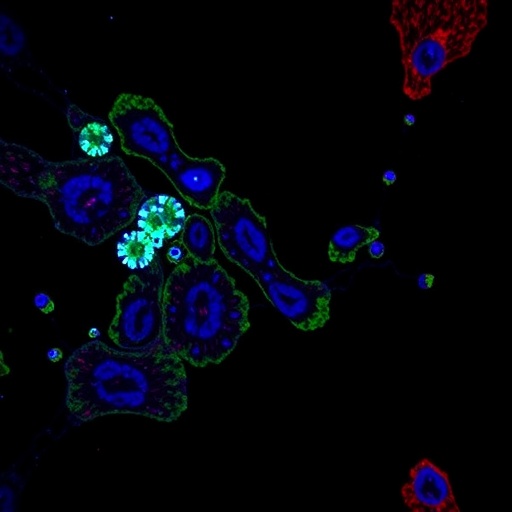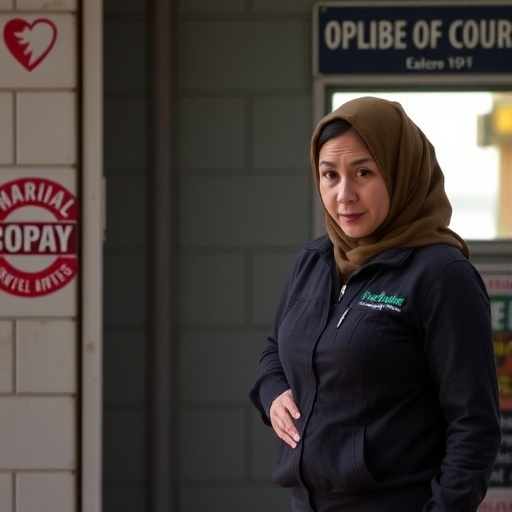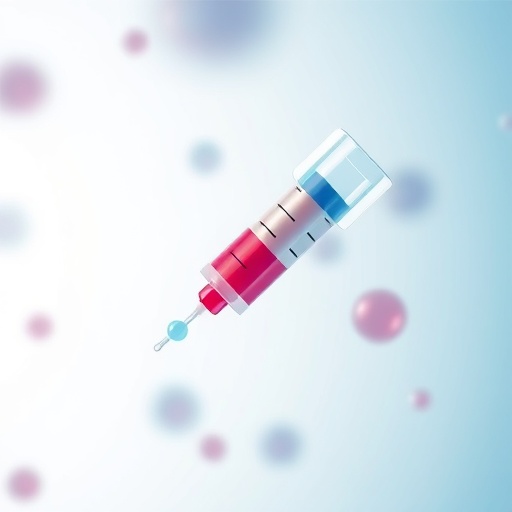In the relentless battle against pancreatic cancer, a new frontier has emerged that intertwines the complex interplay of tumor hypoxia, autophagy, and immune evasion. Recent groundbreaking research published in Genes and Immunity offers a detailed and provocative look into how hypoxia-induced autophagy within pancreatic tumor cells manipulates the immune microenvironment, particularly undermining the cytotoxic functions of CD8⁺ T cells through suppression of MHC-I expression. This revelation not only deepens our understanding of pancreatic cancer’s notorious resistance to immunotherapies but also opens novel avenues for targeted interventions aimed at restoring immune surveillance in one of the most lethal malignancies.
Hypoxia, a state characterized by deficient oxygen levels, is an almost universal hallmark of solid tumors, including pancreatic adenocarcinoma. Within these oxygen-starved niches, tumor cells adapt by activating hypoxia-inducible factors, the most prominent being HIF1α (hypoxia-inducible factor 1-alpha). This transcription factor orchestrates a wide array of cellular survival pathways, allowing cancer cells to thrive even under metabolic stress. The investigation by Zhou et al. elucidates how HIF1α exploits autophagy—a catabolic process responsible for degrading and recycling cellular components—as a stealth mechanism to impair the immune system’s front-line soldiers, CD8⁺ cytotoxic T lymphocytes.
Autophagy has long been debated within immunology and oncology circles due to its dualistic roles. On one hand, it contributes to maintaining cellular homeostasis and antigen presentation; on the other, it can serve as a shelter for tumor cells evading immune detection. The study presented here offers compelling evidence that in the specific context of pancreatic cancer under hypoxia, autophagy acts more as an accomplice of immune escape rather than a tumor suppressor pathway. By activating autophagy in tumor cells through HIF1α, pancreatic cancer effectively downregulates MHC class I molecules on the tumor cell surface—critical components for presenting tumor antigens to CD8⁺ T cells.
A combination of state-of-the-art laboratory techniques, including western blotting and immunofluorescence, was employed to quantify the expression of HIF1α and autophagic markers under normoxic and hypoxic conditions. The findings demonstrated a stark increase in both HIF1α and autophagy markers when tumor cells were subjected to low oxygen environments. Intriguingly, pharmacological inhibition using KC7F2, a known HIF-1α inhibitor, was able to reverse this elevation, suggesting a direct regulatory link between hypoxia signaling and autophagic activity.
The research delved deeper, applying chloroquine, a classical autophagy inhibitor, which successfully dampened autophagic flux back to baseline levels observed under normoxia. This approach not only confirmed autophagy’s key role but also highlighted potential therapeutic angles—by interfering with autophagy, the immunosuppressive tactics of pancreatic tumor cells could be hindered, thereby reinstating T cell-mediated cytotoxicity.
Central to the immune pathways analyzed was the expression of MHC-I molecules on the surface of pancreatic cancer cells. Utilizing comprehensive assays such as qRT-PCR, flow cytometry, western blot, and immunofluorescence, the investigators meticulously quantified the downregulation of MHC-I in the presence of elevated HIF1α-induced autophagy. This reduction in antigen presentation essentially cloaked cancer cells from the immune system’s CD8⁺ T cells, which rely heavily on MHC-I to recognize and target malignant cells.
Further analysis of the T cell compartment revealed not only reduced cytotoxicity but also alterations in the activation profile of CD8⁺ T cells co-cultured with hypoxic pancreatic tumor cells. Enzyme-linked immunosorbent assays and flow cytometry confirmed a dampened cytokine secretion landscape and a failure to maintain an activated cytotoxic phenotype—key components necessary for effective tumor clearance.
Pushing beyond in vitro models, the study employed humanized immune-reconstituted mouse models to validate these mechanisms in vivo. Pancreatic tumors with enforced overexpression of HIF1α demonstrated pronounced capacity to evade immune destruction. The compromised MHC-I antigen presentation pathway translated into decreased CD8⁺ T cell infiltration and activity, thereby enabling unchecked tumor progression and immune escape within the hypoxic tumor microenvironment.
Collectively, this body of work highlights a sophisticated molecular dance orchestrated by hypoxia and autophagy in pancreatic cancer. By reducing MHC-I expression, these tumors exploit a fundamental vulnerability in the adaptive immune system, effectively rendering CD8⁺ T cells blind to their presence. This not only challenges current strategies in immunotherapy but also underscores the importance of targeting tumor metabolism and autophagy directly as a strategy to overcome immune resistance.
The implications of these findings reverberate broadly across cancer immunology. Tumor hypoxia has long been associated with poor prognoses and resistance to therapies, but this research pinpoints precise molecular players—HIF1α and autophagy—that mediate immune suppression, offering new biomarkers and drug targets. The use of small-molecule inhibitors such as KC7F2 and chloroquine analogs to modulate these pathways introduces tangible clinical possibilities for combination therapies designed to revitalize CD8⁺ T cell function in “cold” tumors.
This study also exemplifies the necessity of understanding the tumor microenvironment’s complexity—beyond genetic mutations and signaling aberrancies. The metabolic adaptations driven by hypoxia and the ensuing autophagic processes present a dynamic, mutable target for innovative therapeutics aiming to convert immune evasive tumors into immune-sensitive ones.
Furthermore, the research prompts a reevaluation of autophagy’s role in cancer immunity, suggesting that its inhibition, particularly in hypoxic settings, may synergize with immune checkpoint inhibitors or adoptive T cell therapies. These synergies could be critical in pancreatic cancer, a notoriously immunologically “cold” tumor with limited response to current immunotherapies.
As this study propels our understanding forward, it also beckons further inquiries into how other immune populations are influenced within this hypoxia-autophagy axis and whether similar mechanisms prevail across different tumor types. Such insights could reshape the landscape of cancer immunotherapy across a spectrum of solid tumors, heightening the precision and efficacy of future cancer treatments.
In conclusion, the discovery that hypoxia-driven HIF1α induces autophagy, which in turn suppresses MHC-I expression and handicaps CD8⁺ T cell cytotoxicity in pancreatic cancer, heralds a new era in dissecting tumor immune evasion strategies. This intricate molecular understanding not only sheds light on the challenges facing immune-based interventions in pancreatic cancer but also invigorates the search for novel therapeutic targets aimed at restoring the immune system’s capacity to recognize and eradicate cancer.
Subject of Research: Impact of hypoxia-induced autophagy on CD8⁺ T cell cytotoxicity in pancreatic cancer and the underlying molecular mechanisms involving HIF1α and MHC-I expression.
Article Title: Hypoxia-induced autophagy in pancreatic cancer counteracts the cytotoxicity of CD8⁺ T cells by inhibiting the expression of MHC-I.
Article References:
Zhou, X., Cai, M., Yang, F. et al. Hypoxia-induced autophagy in pancreatic cancer counteracts the cytotoxicity of CD8⁺ T cells by inhibiting the expression of MHC-I. Genes Immun 26, 45–53 (2025). https://doi.org/10.1038/s41435-024-00315-1
Image Credits: AI Generated
DOI: 10.1038/s41435-024-00315-1
Keywords: Pancreatic cancer, Hypoxia, HIF1α, Autophagy, CD8⁺ T cells, MHC-I, Immune evasion, Tumor microenvironment, Immunotherapy resistance
Tags: CD8+ T cell suppressioncellular survival pathways in cancerHIF1α role in cancerhypoxia and tumor microenvironmenthypoxia-induced autophagyimmunotherapy resistance mechanismsMHC-I expression in tumorsnovel interventions for pancreatic cancerpancreatic adenocarcinoma challengespancreatic cancer immune evasionrestoring immune surveillance in cancertargeting autophagy in cancer therapy





